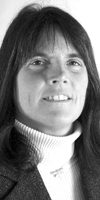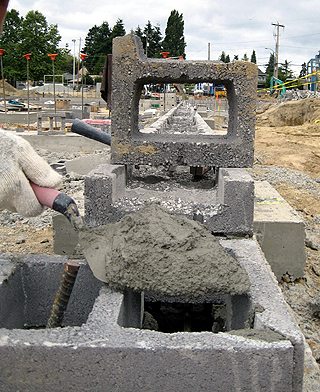|
Subscribe / Renew |
|
|
Contact Us |
|
| ► Subscribe to our Free Weekly Newsletter | |
| home | Welcome, sign in or click here to subscribe. | login |
Construction
| |
 |
September 20, 2007
Seattle gets creative to expand bidding pool
DKA

Kester
|
Seattle Public Schools’ Building Excellence program was established to renovate or replace the district’s many dated facilities.
Seattle voters have overwhelmingly supported the program since its introduction in 1995. By the end of 2008, 24 of the district’s 100 buildings will have been fully renovated or replaced.
The $490 million third phase of the Building Excellence program, now under way, includes a number of major capital construction and renovation projects. Schools slated for major work include Ingraham High School, Hamilton Middle School, Nathan Hale High School, Denny Middle School, Chief Sealth High School and the South Shore K-8 School.
DKA was selected as the prime consultant, responsible for the overall project management.
Attracting bids

In today’s construction climate, innovation is the name of the game, particularly when building schools.
Few subjects raise American passion and scrutiny like public education — and construction projects for public education are no different. Under the microscope of this public scrutiny, the pressure is on to be creative in the use of taxpayer funds.
Clearly, construction industry costs in the Pacific Northwest continue a sharp upwardly trend. In managing nearly half a billion dollars in public projects, the question becomes, “How can we get contractors interested in bidding competitively on school projects when there is abundant work in the region?”
“Nothing drums up interest better than personal networks,” says Brian Carter, Integrus Architecture’s principal-in-charge for the Ingraham High School addition.
“We have been finding success by offering open houses during the design phases on some K-12 projects, in which we publicly advertise opportunities for contractors to come into our offices and review projects during the design stages. This allows us to build some anticipation in the contractor community for upcoming work, and a few times has even resulted in our projects getting scheduled ahead of time in contractors’ estimating rooms.”
Employing creative networking and generating enthusiasm for high-profile school projects are positive advancements, but John McWilliams, DKA’s project manager for the Ingraham project, takes it a few steps further.
“One of the challenges we face during this period of robust economic growth and booming construction activity is that many of the larger contractors are already committed to other projects,” he says.
“In order to widen the pool of potential bidders for our school projects, we are now looking at breaking down the project scope of work into multiple smaller packages that can be bid on by mid-sized contractors that would not otherwise have the bonding capacity to take on some of our larger projects. This approach is intended to provide more-competitive bids and consequently save money for Seattle Public Schools.”
Opening doors
The Seattle Public Schools’ Historically Underutilized Business, or HUB, program was established to help increase participation by small businesses in contracting with the district and other government agencies.
It is not based on the ethnicity or gender of the proprietors, but instead focuses on businesses that meet certain standards for size, quality and reliability. The HUB program has been hailed as one of the most innovative and solution-oriented programs in the state. In the first 19 months of the program, the district has awarded contracts valued at nearly $30 million.
“We see numerous benefits to the HUB program,” says Fred Stephens, the district’s interim chief operating officer and director of facilities. “Not only are we able to strengthen the local economy by helping small businesses grow, we also increase the pool of bidders for projects, which makes for a more competitive process.”
Building green
Teaching children the importance of being committed to the environment is crucial in this day and age. It is imperative that we show them the need for green initiatives is real and that their parents’ generation is committed to investing in their future.
Seattle Public Schools have made their commitment known by the strong support they give to building green, by incorporating sustainable elements into all their projects.
Some examples include natural daylighting, low-gas emitting finish materials, the use of bioswales, and geothermal heating and cooling systems. Additionally, recycling and reuse of construction materials are important tools in building green, something the district has been doing for the last 13 years.
In 2005, the High-Performance Public Buildings Act was passed by the state Legislature, which made Washington the first state in the country to enact green standards for new public buildings.
This year, the Seattle School Board unanimously adopted a resolution to become a member of the Seattle Climate Partnership, which is committed to reducing greenhouse gases that contribute to global warming. The Seattle Climate Partnership is a voluntary agreement among local organizations to find ways to reach Seattle’s community-wide goal of meeting or exceeding a 7 percent reduction in greenhouse gases by 2012, based on 1990 emission levels.
The resolution’s adoption makes Seattle Public Schools the first K-12 public school district to become a Seattle Climate Partnership member.
DKA’s work through the Building Excellence, or BEX, program has provided a foundation to continue to find inventive ways to manage public projects.
“For the members of the DKA program management team, participation on the BEX program is an honor,” says DKA President Donald King, the BEX program manager.
“We are doing work that we know will have a positive outcome for the children of Seattle. There can be no better legacy of one’s professional career than contributing to the facility needs of our children’s educational foundation.”
Cindy Kester is the marketing manager at DKA, a Seattle-based firm that specializes in architecture, planning, interior design and project management.
Other Stories:
- Cascadia college building will be green inside and out
- Owners, designers can harness the Web too
- ‘I wish I could go to a school just like this’
- Light ‘chimneys’ cool off Tacoma school
- Performing arts spaces gain sophistication
- Lynnwood a proving ground for green schools
- Spokane takes a chance on GC/CM
- Public school projects fall out of favor with bidders
- Case for operable windows isn’t open and shut
- Tomorrow’s schools will be greener, freer


